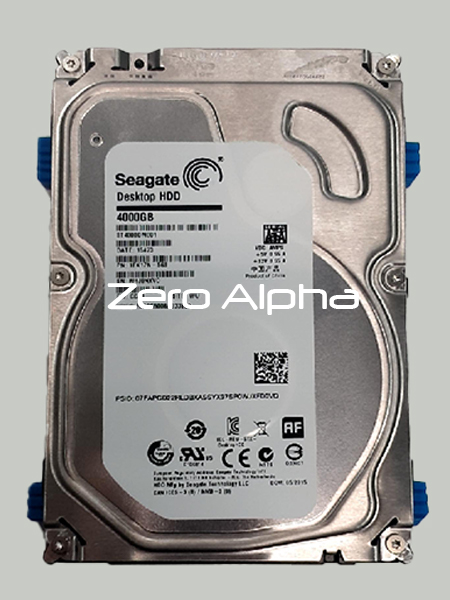Seagate ST4000DM001 Data Recovery
Seagate ST4000DM001 data recovery services. Here's a brief overview of the most common problems encountered with this model:
-
Firmware Corruption: The ST4000DM001 is notorious for firmware issues that can cause the drive to become undetectable. This often results in the drive spinning up without being recognized by the system, making data inaccessible.
-
Clicking Sound: A clicking noise from this drive usually indicates a mechanical problem, such as a failed read/write head or issues with the spindle motor. This can lead to data loss if not addressed quickly.
-
PCB Failure: The printed circuit board (PCB) of the ST4000DM001 can fail due to power surges or electrical shorts. This failure can prevent the drive from spinning up or cause erratic behavior, making data recovery challenging.
-
Bad Sectors: Over time, this model can develop a significant number of bad sectors. These bad sectors can corrupt file systems, making data retrieval difficult without specialized tools.
-
SMART Errors: SMART (Self-Monitoring, Analysis, and Reporting Technology) errors are common in this model, often signaling impending failure. Regular backups and prompt data recovery are recommended when these errors are detected.
Addressing these issues typically requires professional data recovery services, especially for mechanical or firmware-related failures.
ST4000DM001-1FK17N Damaged Translator Case Log

This is a Crawford family drive. It spins up and stays busy, printing No HOST FIS-ReadyStatusFlags 0002A1A1 to the terminal. This means the translator was not loaded.
System files can be read via terminal (increasing the baud rate is recommended). Reading translator/MCMT fails partway through with DiagError 0000000E. These modules can be read one sector at a time, which is significantly lower, but works.
Copy 0 of the translator had two bad sectors, these were recovered from copy 1 (which also had bad sectors, but at different offsets). Wrote the repaired translator back to the drive (after verifying that heads can write in SA).
Copy 0 of the MCMT had bad sectors, while copy 1 could not be read at all. Cleared MCMT with C>U10 and imported extents from the original damaged copy 0.
SMP was modified to disable problematic features.
After repair of translator and MCMT, drive had same No HOST FIS-ReadyStatusFlags 0002A1A1 issue. Using Ctrl+X command, we see a read error at SA LBA 0x127AA which corresponds to copy 0 of system file FC37E132. Reading this system file via terminal (one sector at a time) reveals a bad first sector. This region was zero-filled (since this part of copy 1 was also unreadable) and written back to the drive.
After fixing system file 132 and rebooting the drive, there is a lot of terminal output. The drive comes ready with full access to the data area, allowing the 3.7TB of customer data to be imaged at full speed.